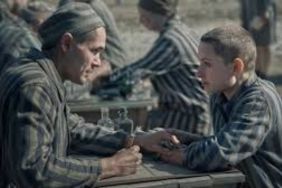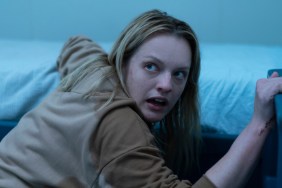
William Friedkin brought us The French Connection and The Exorcist, two obvious conversation topics when chatting with the Oscar-winning director, but on top of that there is so much more he’s brought to the table worthy of discussion and your attention.
In Part One of this interview I featured our conversation pertaining to Friedkin’s new film Killer Joe. In Part Two we’re rewinding the clock back to the early ’70s and discussing The French Connection and whether or not Howard Hawks (The Big Sleep) really did give him the push to direct the film and what he did to get Gene Hackman mad for his Oscar-winning performance as Jimmy Doyle.
We discuss The Exorcist and I ask about the rumored television show and if he’s ever seen any of the sequels. We talk about his lawsuit over the rights to Sorcerer, an intense remake of the classic 1953 Henri-Georges Clouzot feature The Wages of Fear and the ambiguity that surrounds the majority of his films, leaving just enough for the audience to reconsider everything they have just seen.
There’s much more to this segment than what’s mentioned above so without any further delay, let’s get started…

Watching your movies I get the impression you love not giving the audience all of the answers, which I totally appreciate. For example, I just watched Cruising and as I’m watching I’m intrigued, but then the ending comes around and I immediately think, “Okay, I need to watch this again.”
No, I don’t provide easy answers in my films because there are no answers in life. We have no idea how we got here, we have nothing to say about how we got here or how we’re going to leave here and we know very little about what happens in-between. Life is full of ambiguous questions and I don’t need to see a movie that gives me easy answers.
Now if it’s a pure entertainment film, I guess you need something like that, I don’t know. I personally don’t. I don’t think life has these easy answers and I don’t think the best films I’ve ever seen, made by other people, are films that answer every problem or every question at the end.
With Cruising — I’ve never read the book it was based on — but I read you removed some details from Pacino’s character? Was that to create a greater ambiguity?
WF: No, it’s not… All I really used from the book was the essential premise and the title. The book is not set in the S&M world as the movie is. The book was set in, sort of the polite, early gay movement; East Side bars where there was really no sexuality that took place in those bars. The film is based in the leather bars of the ’70s.
And the production took a little heat for that.
WF: Yeah, oh sure, because it was the beginning of the gay liberation and Cruising — I didn’t think about it at the time — but it was not the best foot forward for gay liberation at that time. Now, the attitude of all the gay publications has changed and the new gay critics are very much in favor of Cruising. I can’t say 100%, but pretty much overall, all the publications that once denounced it have all praised it that I’ve seen. They recognize it as being true to its time period and it’s a time that’s long gone because of AIDS. AIDS had just come into being around the time we were filming.
Your films have a tremendous amount of suspense and, for example, the ticking clock at the end of Rampage takes a lot of guts to have the confidence that an audience is that engaged with the story. Where do you decide where to draw the line on something like that?
WF: I don’t know. It’s all subjective. Some people may think it is too long now, some people may think it’s not long enough. It’s all subjective, there are no rules. When you shoot a film or edit a film, you’re going on your subjective impulses at the time. If I were making any of my previous films today I might do them differently because I’ve changed and evolved over the years. I don’t know, I haven’t seen The French Connection, The Exorcist or any of the other films for a long time, but they exist in my mind’s eye, in my memory, and I might do something different, but I can’t think of what.
I also wanted to ask you about The Exorcist and the spider-walk scene which Dr. Mark Kermode has talked about at length mentioning how he found the scene in the Warner archives and cut it one way (video to the right at the 2:37 mark), but when the “Version You’ve Never Seen” eventually came out it was shown a different way. The first one had Regan’s tongue coming out and then she attacked Kitty Winn, now she comes down the stairs and vomits blood. Was there a reason for the change?
WF: I don’t know what Mark Kermode did in taking the original footage, but I cut the scene out of the original film because the wires showed that were holding her body. Then, when it became possible to digitally remove the wires, I put it back in in the year 2000 and I cut it the way I thought it was right to cut it.
I don’t recall, whatever Mark Kermode may have done, but I cut it the way– I think when I did film it, I had the demon chase after the Kitty Winn character, but it looked kind of silly and stupid, even upon reflection, but I put 12 minutes back into the film simply because Warner Bros. said, “Look, if you will put back the 12 minutes you originally cut,” because no one forced me to cut them or even asked me to, I did it because I thought the film moved better in 1973. Then I looked at these 12 minutes, because they said, “If you can find 10 or 12 minutes to put back in we’ll re-release the film theatrically.”
So I went back and looked at the film and thought, Yeah, this is alright. It’s just going to make the film longer, but since hundreds of millions of people have now seen it many times let ’em see 12 more minutes. So I put the scenes back.
| Original Version | Second Version |
There’s also a rumor floating around that you and William Peter Blatty are considering an Exorcist miniseries.
WF: There are too many rumors around. That’s the only thing you can count on with these rumors. There’s nothing concrete about any of that. I don’t know if someone is planning a mini-series, I’m not.
The rumor, though, is why I found it interesting considering sequels have been made to your films, but you haven’t made them.
WF: Well there’s nothing more to say. You would only do something like that for money and the point is, if there was a valid story to be told as a follow-up, both Blatty and I would definitely do it again. But I think everything has been said about The Exorcist that needs to be said or shown.
Have you watched any of the Exorcist sequels or prequels?
WF: I’ve never seen any of the — whatever they are — two, three, four. The one that [Blatty] made, I’ve never seen that. I have no interest in seeing them. No desire in seeing them. I’ve heard about them and I know something about what they dealt with and it just seems to me they’re probably all very stupid. But I shouldn’t judge them not having seen them, [though] I’ve seen a few minutes here and there.
When I was at the Technicolor lab, a number of years ago when Exorcist II had finished and they were printing it, the guy at the lab said, “Here, you want to see a reel of this thing?” I went in and saw a reel of it and it was awful and I just left the screening room and I’ve never gone back.









